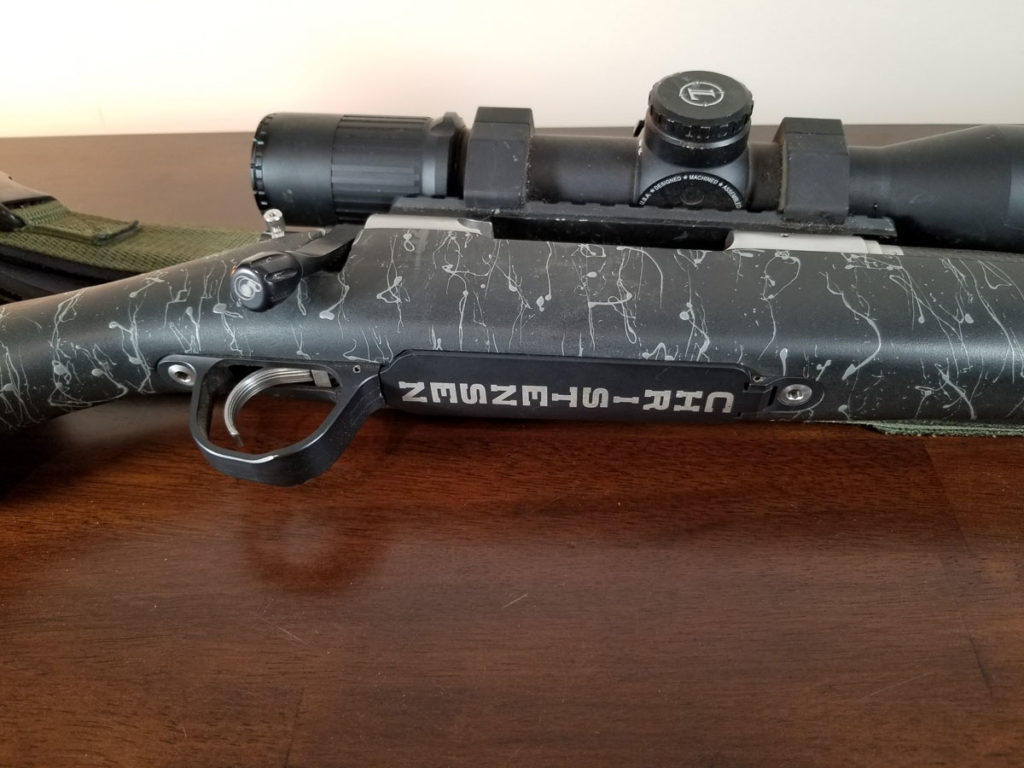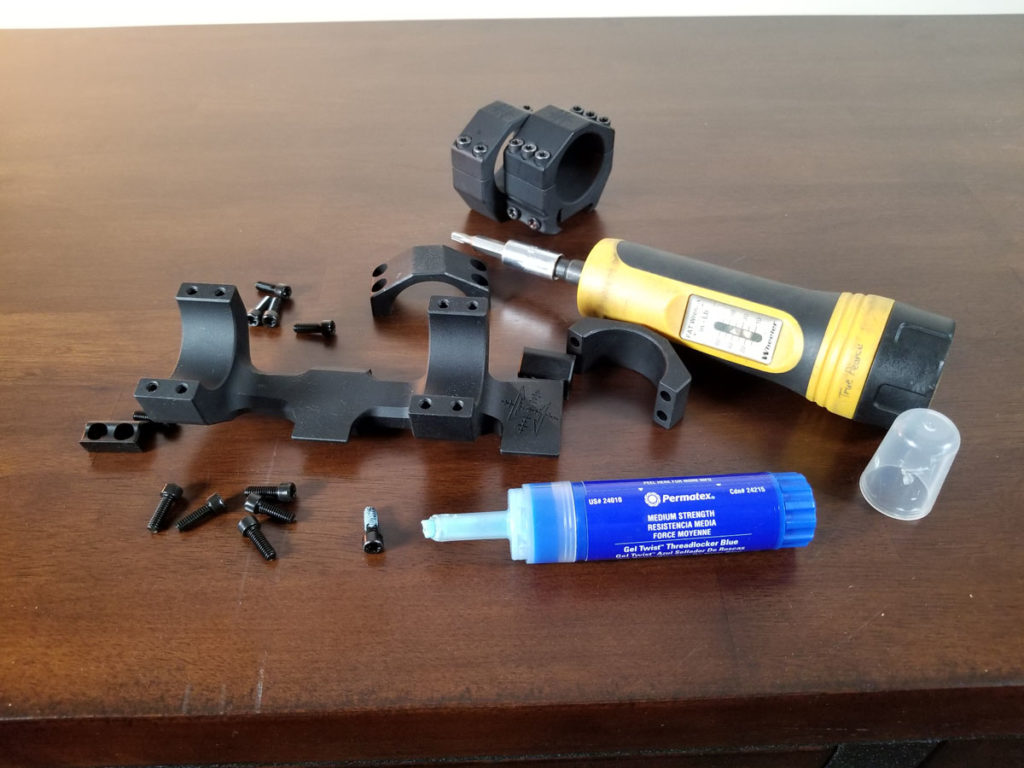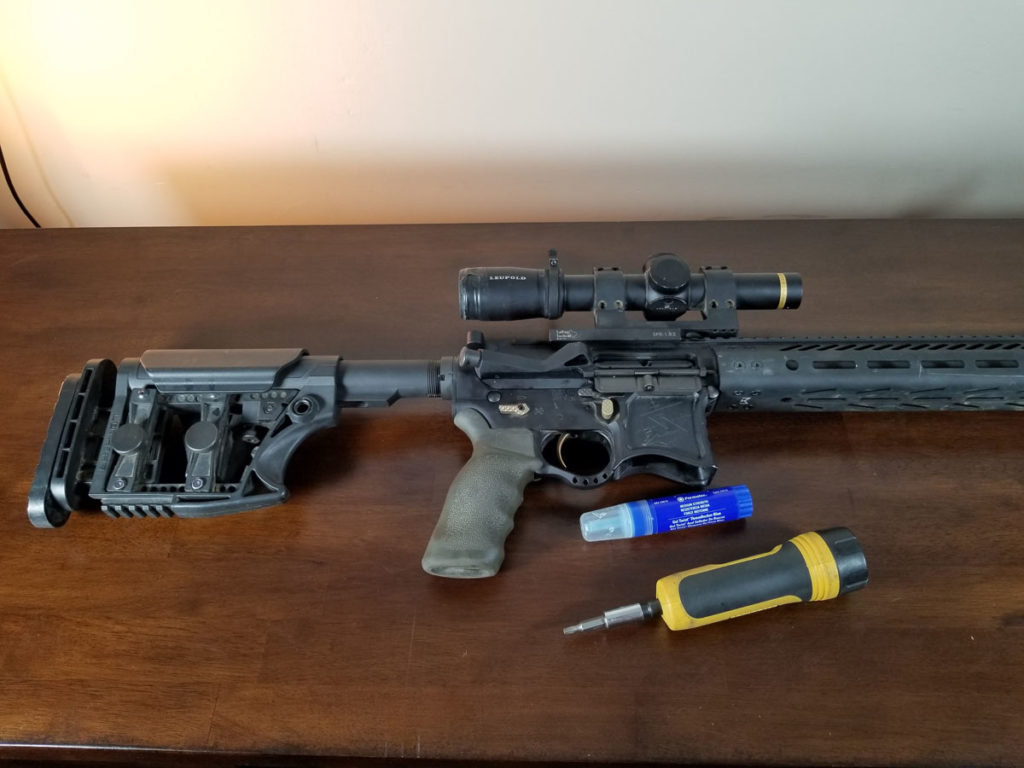There’s nothing worse than having the zero on your rifle shift or change. I’ve had it happen on several occasions and it can be a frustrating experience. Below are three things that I’ve started doing that have helped prevent loss of zero on my rifles.
One
Torque your stock screws to the proper torque specs as per the manufacturer. Check them regularly and always torque them to the same specification each time you have your gun apart. If your stock isn’t properly torqued the action can move inside the stock causing point-of-impact shifts. Remember with the screws and bolts on guns that we use inch pounds and not foot pounds We use foot pound torque wrenches on barrels and barrel nuts. Most automobile torque wrenches are in foot-pounds.

From Left to Right: Wheeler Engineering torque wrench, Warne 65 inch-pounds torque wrench and a foot-pounds torque wrench for barrels and barrel nuts.
It’s always best to go with your stock or rifle manufactures suggested torque settings. As a rule of thumb if your stock has an aluminum bedding block the front action screw is 55-60 inch pounds and the rear is 25-35. Always start by torquing the front action screw (the one closest to the muzzle) first. If you have a wood or fiberglass stock without pillars, you will be torquing at a substantially lower number. If you overtighten you’ll get stock crush which can lead to all kinds of problems. You can usually get the torque spec from the manufacturer.
As an interesting side note, an effective way of adjusting harmonics is to play with your stock torque settings. You might find that your rifle shoots tighter groups when the stock bolts are torqued to the “sweet spot.”
On non-traditional modern sporting rifles (ARs) make sure your barrel nut and handguard are tight and torqued properly. Loose barrel nuts are the first thing I look for in ARs that are shooting erratic groups or that have zero shifts. It’s a surprisingly common problem.
Two
Use a torque wrench on your scope mount bases and rings to ensure that they are tight enough but that you aren’t going to strip them out. A number of years ago, as a poor college student, I had saved the money for a 26-inch, heavy-barreled Savage 223. I didn’t have a torque wrench and I stripped out one of the receiver screws when installing the scope mount base before even getting to shoot it. It turned into a real ordeal and a learning experience. My next purchase was a torque wrench. The idea here is that with small fine threads you can stretch/distort the threads or in a worst-case scenario strip them if you overtighten them. On the other hand, if you don’t get them tight enough they’ll come loose. You really need a torque wrench to do this properly.
I had a hunting buddy miss a great buck four times and finally give up in disgust. Back at camp we examined his rifle and found that the front screws on his scope mount had come loose. He’d lost his zero and every time the rifle fired it moved the position of the scope so that the shots went all over the place. It seems like you’d notice this but it wasn’t obvious.
When tightening scope rings, if you over tighten, you run the risk of stripping the ring and/or damaging your scope. Most rifle scopes are made with aluminum bodies that are machined to be in specific tolerances. When you overtighten a scope ring you can crush, pinch, or distort the scope body which can lead to failure of the scope to hold zero, track, etc. The internals of the scope have to move inside the tube and if you’ve created a “tight spot” it can be problematic. So, don’t overtighten your scope rings.
I once had a scope manufacturer tell me that 95% percent of the problems they’d seen with their scopes were related to improper mounting and damage from scope rings.
Always follow the manufacturer’s torque recommendations for scope mount bases and scope rings.
As a rule of thumb, most scope mount bases should be torqued to no more than 15-inch pounds. Most scope rings should be torqued to 20-inch pounds. Obviously, the thread pitch, screw size, and materials used (steel vs aluminum) will make a difference. It’s likely that you’ll see small differences from one manufacturer to the next and you should always follow the manufacturer’s recommendations if they are available.
Three
Use blue Loctite on everything with a thread. Vibration from shooting, recoil, driving, four wheelers, scabbards, backpacks, flying, and temperature changes can cause movement in threaded fasteners. I use blue Loctite on everything and have literally been problem free since I started doing it. My hunting rifle does hundreds of GPS tracked miles in a scabbard on a horse each year. It hits trees, brush, and has constant motion from the horse. Not only does the blue Loctite prevent screws and threaded fasteners from loosening, but it also seals the threads preventing rust, dirt, and debris from getting into the threads. Before using the blue Loctite wipe oil from threaded parts.
I use Loctite and proper torque settings on scope mount bases and rings, stock screws, AR-15 handguards, grips, buttstock parts, and literally anything else that could come loose. I shoot thousands and thousands of rounds a year and have found it to be one of the most important things I can do to be problem free at matches or in the field.
Please leave a comment if you have a story of something coming loose or a good tip for maintaining zero on your rifle.


